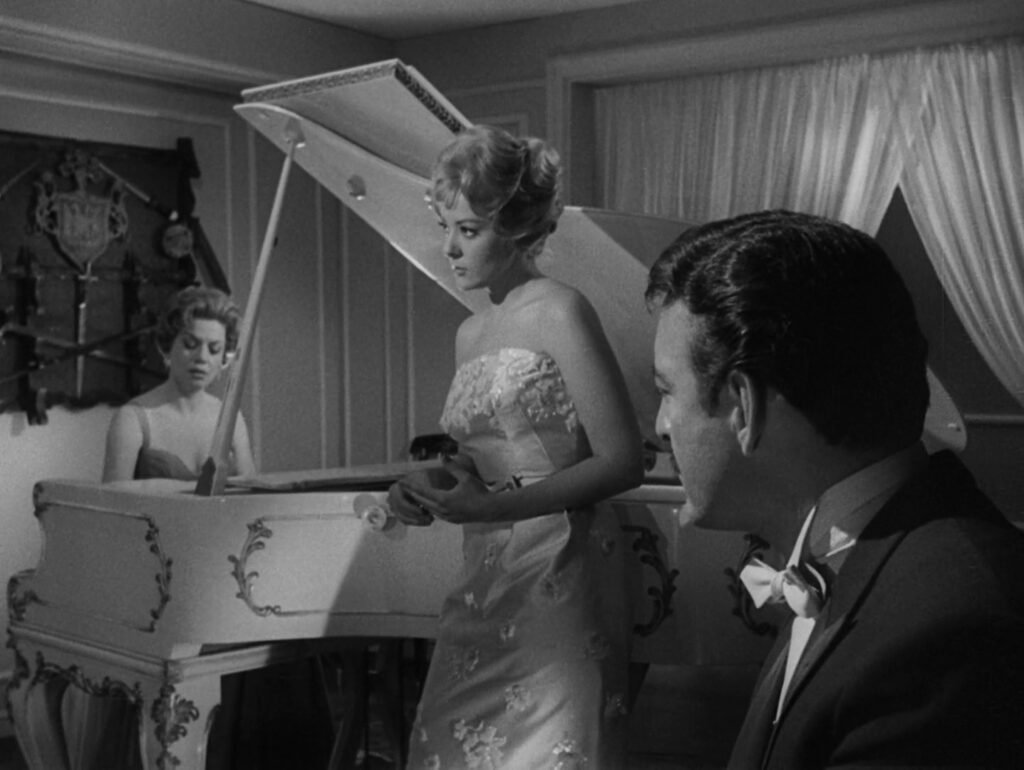
The Exterminating Angel
1962, directed by Luis Buñuel
It’s not exactly wrong to call The Exterminating Angel a surrealist film. There’s plenty in it that’s strange or dreamlike: the invisible force trapping party guests in the salon; a severed hand; the pet bear; sheep in the kitchen; a nightmare about the Pope; and most flagrantly the numerous repetitions, which even Buñuel’s crew took for errors when they first saw the film. Fans of surrealism might be disappointed though to realize that the film makes logical sense. Its strangeness isn’t gratuitous. Buñuel had a social and political point to make, but ultimately the point transcends politics. At any rate, we shouldn’t allow a stylistic label like “surrealism” to put an end to questions.
The first of the repetitions occurs when Edmundo and Lucía de Nóbile arrive with their party guests, and Edmundo summons the doorman Lucas, the first servant who had fled. At first Edmundo and his guests are shot from a low angle, the figurative point of view of two fleeing maids who are intimidated by the sight of their master and scurry to hide behind a door. The scene then repeats – the crowd enters again, and Edmundo calls Lucas’ name once more – but this time the camera looks down on the hosts and their wealthy guests, and the two maids – as if finally seeing their master in perspective – are emboldened to leave. One instance shows a more literal reality, the way things happen in real life. The second instance reveals the social reality underneath, how hierarchies depend on a fragile perspective.
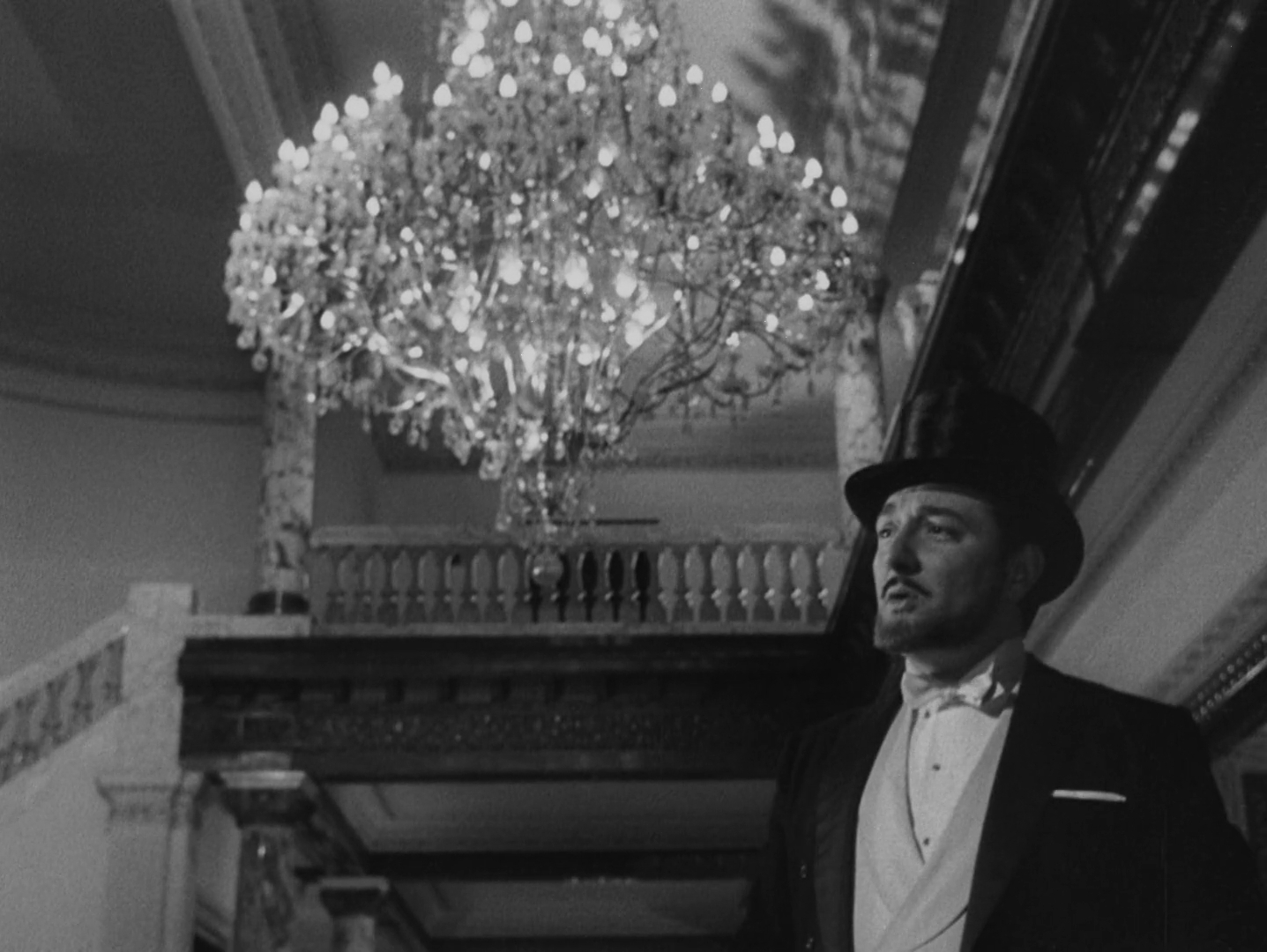
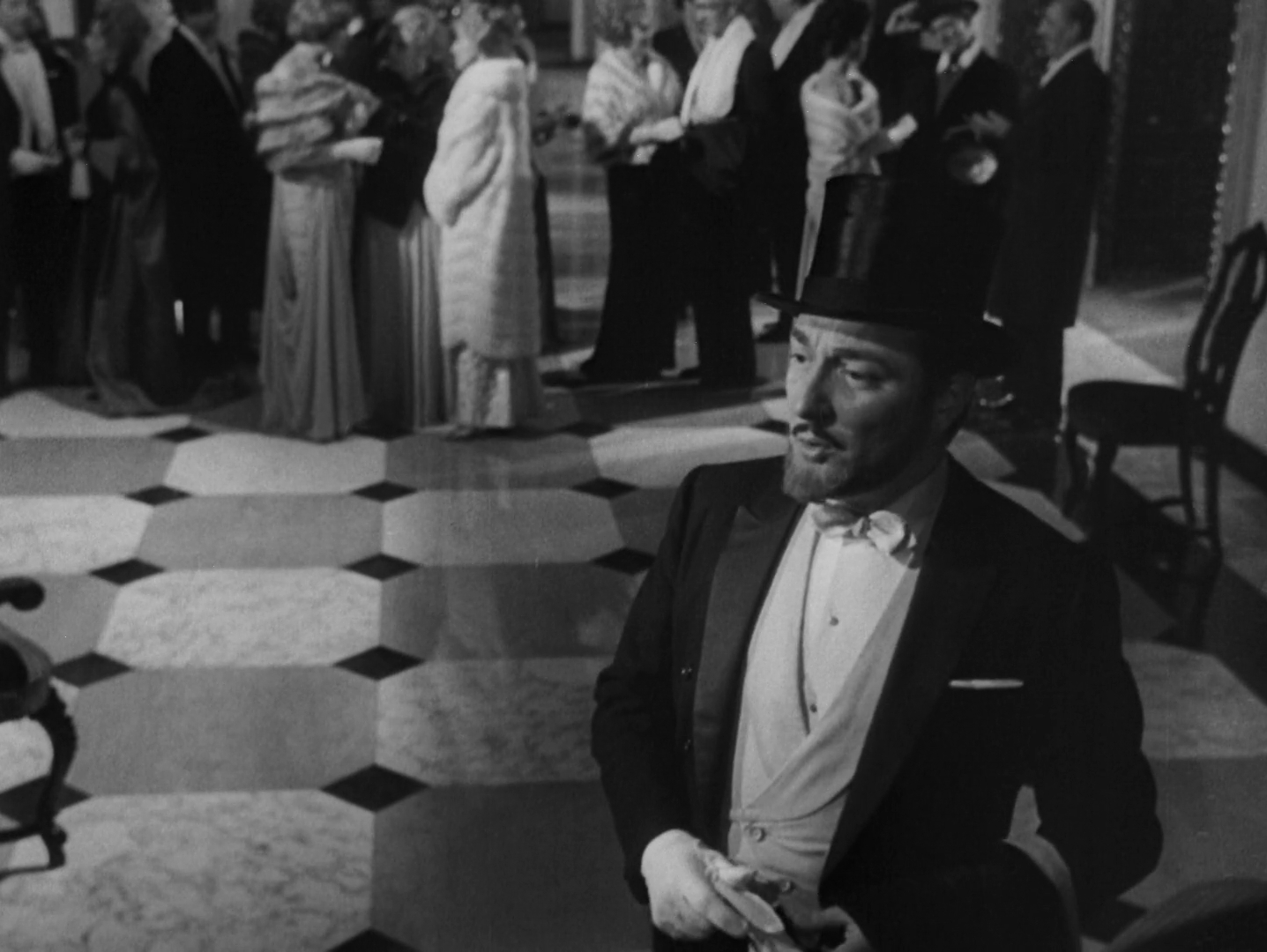
Likewise, Edmundo’s repeated dinner toast reveals the social truth behind the veneer of good manners. When he first raises the toast, all the guests listen politely then turn to each other with their gossip. The second time they don’t even pretend to listen, they just talk over him.
The same pattern scales up to fit the big repetition that turns the plot. After Blanca plays the second movement of Paradisi’s sixth piano sonata, the party starts to wind down, and the guests make motions to leave – but somehow no one can find the willpower to do so. They make excuses to spend the night, but the next day they realize they’re trapped, even though nothing blocks their exit. Weeks pass; the twenty-one partygoers make futile attempts to escape; three of them die; and the movie nears its end. Suddenly, by chance, Leticia notices that everyone and all the furniture is once again arranged in the same positions they had occupied during Blanca’s performance. Leticia ecstatically coaxes the other seventeen surviving partygoers to repeat everything they had done previously when their entrapment began. Blanca repeats the sonata, everyone fervently reenacts their words and gestures, and they all burst out of the room.
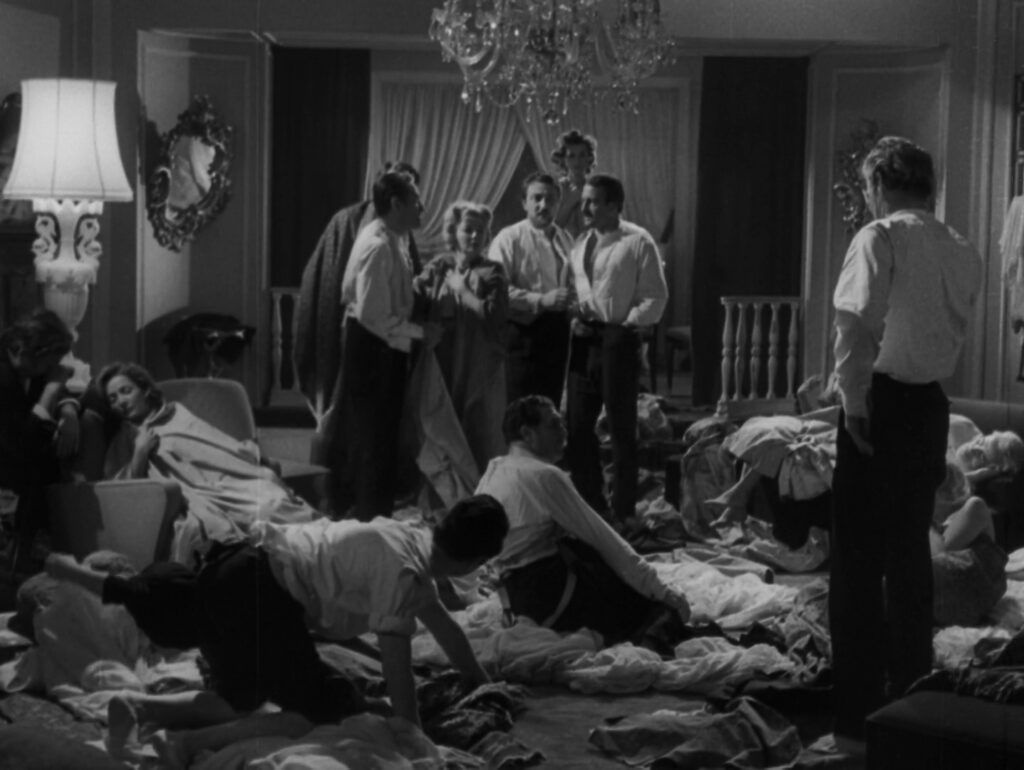
It’s too easy to accept the given explanation, that the partygoers escape because of this coincidental re-alignment of persons and furniture. Focusing on surrealism only encourages us to settle for this explanation, which in fact explains nothing at all. It’s only a condition, a necessary but insufficient cause, of the characters’ release. We can find the real reason if we compare the acting at both ends of the long imprisonment. When nothing else has worked – not acts of will, not a Masonic cry for help, not prayer or the rosary, not superstitious charms, not the offer of human sacrifice, not even pushing each other through the door – why should the magical repetition of an earlier moment free them? The answer will tell us why they got stuck in the first place, why they get stuck again in the church, and what the whole movie is about.
After Blanca first plays the sonata, the characters behave as they had all evening, the way Buñuel wants us to believe that the upper classes (which he came from) typically do. They speak and act with a show of refined propriety that masks all the crudeness they attribute to the lower classes. As the double dinner toast revealed, their friendly concern for each other is fake. After the piano piece the guests applaud, gather to praise Blanca, shake her hand, and exchange pleasantries. Two gentlemen discover that they’re connected through a fraternal society, but there’s still an awkward distance between them, as there is between Blanca and her admirers. We can call this distance “detachment” – the inability or unwillingness of individuals to make genuine human connections. As it turns out, detachment is a persistent subject in Buñuel’s movies – think of Simón separating himself atop his pillar in the desert, or the characters in The Discreet Charm of the Bourgeoisie walking up a road without speaking to each other.
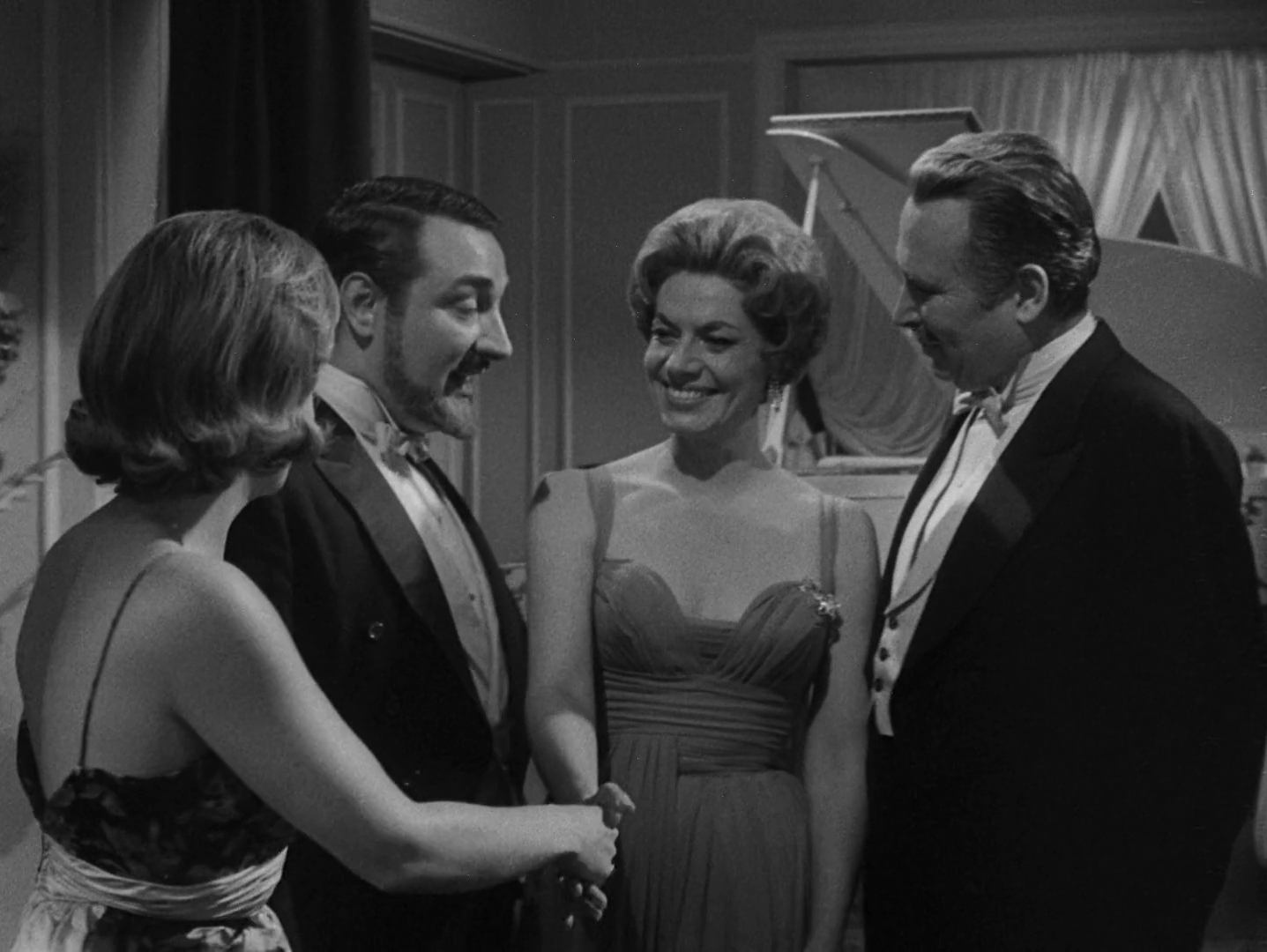
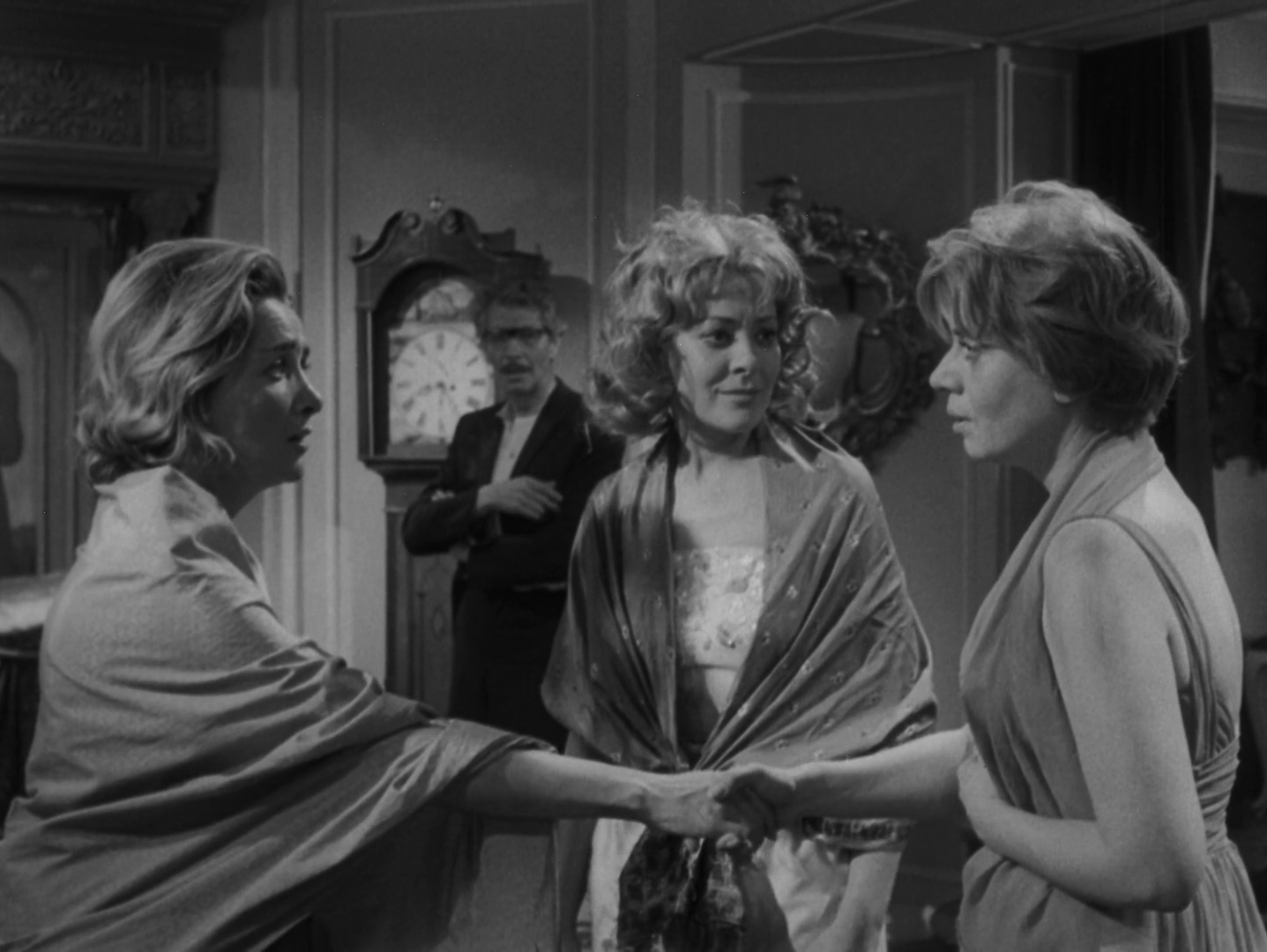
What a difference from this atomized assembly when Blanca plays the sonata again weeks later. Now everyone’s acting is totally heartfelt. For a few moments they all come together in a communal effort. Their compliments to Blanca are sincere, and they unite in a crescendo of shared ecstasy. For once they show none of their habitual detachment, and this is what liberates them. Their long entrapment, as we may now realize, has been a metaphor for the real and lifelong prison of their detachment from the people around them.
The upper class don’t have a monopoly on detachment. The crowd outside is just as unable to enter the mansion as the partygoers are to leave, but at least the lower classes are not imprisoned by the invisible force. The servants flee the house as the party begins, showing a social intuition that their “betters” lack. Only Julio, the majordomo, stays inside and gets trapped, typical for a head servant who identifies more closely with his masters than with his fellow proletarians. “Detachment” describes not only the separation among self-absorbed members of one class, but also the wider separation between classes. The climactic liberation concludes hopefully with the two sides rushing toward each other in front of the house, the patrician partygoers and the servants and policemen outside meeting joyously as if class differences could be erased in an instant of enlightenment.
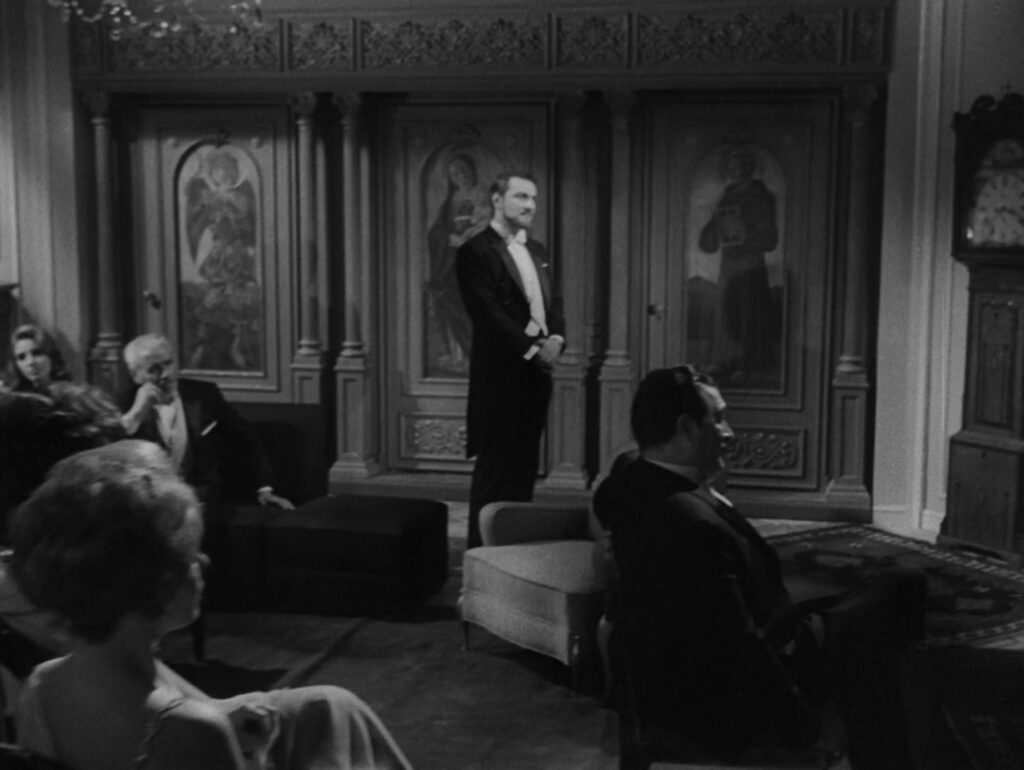
Buñuel’s satirical humor pervades the movie, always exposing the incivility that hides beneath the veneer of politeness in high society. The rich bring their troubles on themselves and fail to learn from their punishments. The most irreverent joke is the unspoken irony in the three closets on one side of the salon, each door bearing a painted image: an archangel, the Virgin Mary, and a saint with a halo and a monastic robe. The closet behind the archangel is filled with vases which the entrapped characters use for toilets. Behind the Virgin Mary they store the dead body of Sergio, and the amorous couple Eduardo and Beatriz hides for privacy behind the monk. Behind each door therefore is a taboo: toilets, death, and sex, and the joke is that the figure on each door can never partake in that taboo. An angel cannot use a toilet, Mary never dies, and a monk can never enjoy sex.
The Exterminating Angel ends on a similar note of irony. The characters get trapped yet again, in a church where they’ve come to offer a mass of thanksgiving. This is yet another repetition, echoing their long stay in the salon, and the deeper reality this time is that they will never get out. Their escape from the room was a cheerful fantasy, but in truth they’ll never break free from their antisocial nature. They will always live detached lives, and bourgeois society will always be dysfunctional.
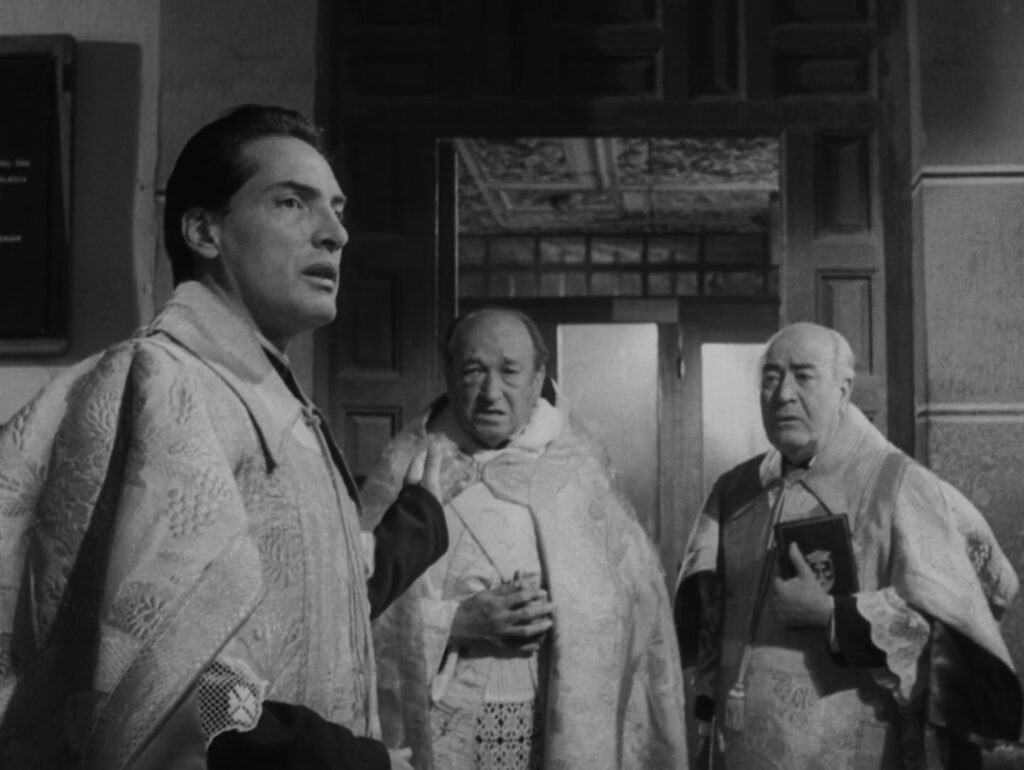
Going from the salon to the church, the characters move from a private world to the public sphere, from the microcosmic scale to the macrocosmic. While they were stuck in the house the police outside kept a genteel order, but at the end the police do what they actually wish and massacre the whole crowd. Likewise the sheep, which entered the salon only because they were chased by a bear, now enter the church willingly. Like the humans, they walk freely to their doom. The Exterminating Angel says that the reality of our world is even more dire than the nightmare that passed in the salon, but at least, in that one moment of togetherness, the movie points the way out. If only people would connect to each other as the guests do for those few minutes, so many social problems would vanish.
CONNECTIONS:
The Ghost and Mrs. Muir – Two uncannily identical arrangements separated by a long interval
Death of a Cyclist – Truth emerges through repetitions
Fires on the Plain – Numerous repetitions; surrealism with a social purpose; disembodied hand
Simón of the Desert – Illustration of detachment and its effects; abrupt and ironic twist at the end
The Day He Arrives – Repetition reveals the underlying reality of a situation
Parasite – Politeness masks contempt in the upper class
INCOMPLETE LIST OF REPETITIONS:
- Two servant women attempting to leave as the guests come in
- The dinner toast
- Cristian’s introduction to Leandro
- The doctor predicts that a patient will soon be bald
- A man pulls the plug on an electric razor that another is using
- The sick woman shouts “Don’t leave me alone!”
- Beatriz disgusted by someone drinking from the vase or eating paper
- Someone says a dishevelled look suits someone
- Positions of the guests and furniture at either end of their long captivity
- Getting stuck in the mansion and then in the church
- Sheep walking in where the characters are trapped